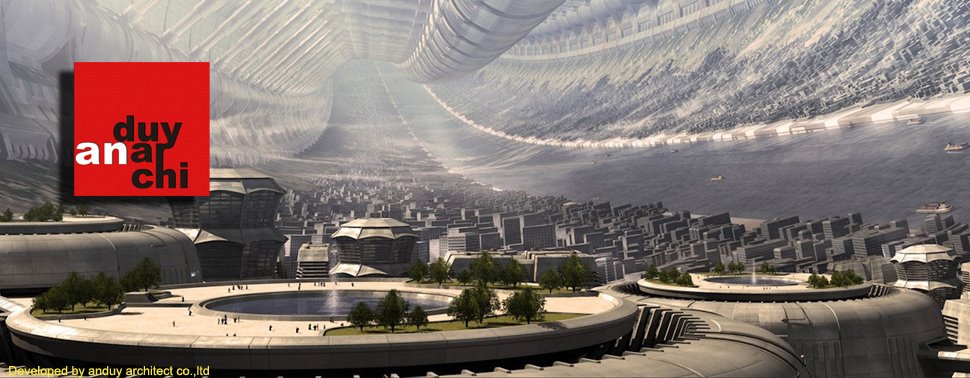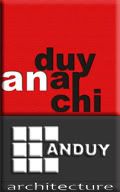
Berlin architects J Mayer H have completed a permanent exhibition on sustainability for car brand Volkswagen’s Autostadt visitor attraction at their factory in Wolfsburg, Germany.

Called Level Green and designed in collaboration with Berlin designers Art+Com, the exhibition explores the concept of sustainability in relation to the environment, economy and society.

Space is divided by a green network of display stands inspired by the PET recycling symbol.

Touch-sensitive screens mounted on the vertical surfaces provide more in-depth information about the printed displays and models.

More Dezeen stories about J Mayer H Arhictects:
Brauner Wegner Priehn centre for dentistry
J Mayer H book competition
Home.Haus foster home
An den Alster office building
Steckelhoern 11 office building
Danfoss Universe theme park extension
Chit.Chat and Positive.Negative art installations

Photographs are by Uwe Walter.
Here’s some more information from J. Mayer H Architects:
–
Personal responsibility in the sustainable use of global resources continues to play an increasingly important role in the life of the average consumer. In this context, the offices of J. MAYER H. Architects and Art+Com Berlin were commissioned to develop a permanent exhibition on the topic sustainability for the Autostadt in Wolfsburg, Germany. The exhibition LEVEL GREEN was opened on the 4th of June 2009 and encompasses approximately 1000 m2, the exhibition renders this highly complex topic tangible, providing for an aesthetic access to information. In so doing, it seeks to unfold the various aspects of the topic while creating an information environment that addresses the visitor on different sensual levels.

Subject to constant re-evaluation based on the latest scientific findings, the term sustainability is characterized by a high degree of complexity. The architectural design of LEVEL GREEN takes the numerous interdependencies of the topic as a starting point and translates this quality into the metaphor of the web. Similar to a continuous organism, the single elements of the exhibition are connected into one homogenous structure that houses all content and technical installations.

As one of the first prominent signs of the growing consciousness for environmentally friendly consumption, the well known PET-sign was taken as a starting point from which the metaphor of the extensively branched web was developed. This originally 2-dimensional sign was extended into the third dimension and through a series of step-by-step manipulations a complex structure was created, which allows for an abstract property of the topic to be experienced on a spatial level.

The dramaturgy of the exhibition is not determined by a linear approach but one of nonlinear logics, opening the space for a more ambiguous experience. Vertical Elements define different areas within the exhibition without strictly separating them, allowing the visitor’s experience to be carried by the idea of playful discovery.

After a phase of extensive material research, the design was executed by the use of easily processed wood composite sheets (MDF) with varying thickness according to the structural and geometrical demands. The MDF-Material is specially treated to meet the fire rating requirements (B1) necessary for this project. In order to guarantee the structural performance of the construction, all vertical elements were reinforced with a steel structure and bolted to the concrete floor. After various testing, the colour coating was executed with acrylic-based car paint, developed to guarantee high usability while meeting strict environmental regulations. The painting was done by local firms accustomed to high quality standards common in the automobile industry.

The concept for the display of information is based two main formats: the object-like display of data and statistics on a more sensational level and touch sensitive surfaces for in-depth explanations on different aspects of the topic. Designed to evoke the visitors initial interest, the first are placed within the exhibition space in the form of data sculptures or sample objects. The latter take on the form of black surfaces for interaction or information carrier and are seamlessly integrated into the vertical elements which define different areas within the space. Necessary technical installations are also integrated into the design and appear only in the abstract form such as glowing lines or painted covers.

As far as the subject matter is concerned, the exhibition LEVEL GREEN argues for scientific research and the use of latest technological development as necessities for survival in the future. This point of view is represented as an atmospheric environment, in which physical and digital spaces complement each other, creating one common narrative.

Here’s some more information from Autostadt GmbH:
At the opening were German Federal Minister for the Environment, Sigmar Gabriel, Bernd Osterloh, chairman of the Volkswagen Group’s Joint Works Council, Dr. Ulrich Hacken-berg, board member of brand Volkswagen, Jürgen Mayer H., the exhibition’s architect, Dr Maria Schneider, Creative Director of the Autostadt and Otto Ferdinand Wachs, CEO of the Autostadt.

The Autostadt’s exhibition LEVEL GREEN examines three aspects of sustainability – the environment, society and the economy - and brings the everyday interaction between these components together in an artistic installation. The design displays the content in an interactive and playful way, stimulating the visitor’s curiosity about the subject of sustainability.

The exhibition, situated on the first floor of the Volkswagen GroupForum in the Autostadt, on approximately 1 000 m_, offers 25 exhibits from which to explore the theme of sustainability. The visitor is led to discover the areas in which she/he can become an active participant. Sustainability is one of Volkswagen’s core values and a long-term policy. “Sustainability at Volkswagen” illustrates this specific approach. The focal points in this area are sustainable mobility and responsibility: presented in this area are drive-train and energy strategies, car life-cycle assessment and research into traffic congestion. “Sustainability and the economy“ presents points of view held by prominent business people, politicians and environmentalists. This area clearly shows that companies with global interests have a great responsibility when it comes to implementing sustainable development.

In the area “Personal use“, the visitor discovers more about how they personally affect the usage of resources, the “Effects of Climate Change” and “Mobility Concepts for the Future” are also presented within the exhibition. How big is your “Ecological Footprint”? An interactive installation allows each visitor to compare the impact she/he has on the planet with the German average. For instance if everyone on earth consumed resources at the average level for Germany, we would require 2,5 “earths” to absorb the environmental impact. The Autostadt’s CEO, Otto Wachs, comments: “Each one of us can contribute to sustainable living. If you are aware that 16 000 litres water are needed in the production of one kilogram of beef, then perhaps you will ask yourself whether from time to time a vegetarian meal wouldn’t do just as well?” He continues: “We would like to draw attention to the potential there is for sustainable action in everyday life”.

That there are many aspects to sustainability which are interwoven, is mirrored in LEVEL GREEN’s architectonic concept. The architectural firm J. Mayer H. of Berlin developed the concept utilizing the green recycling symbol of three arrows as a starting point, they created a net-like structure, rather like a sculpture, which draws the content of the exhibition into an integral whole.
During the construction of LEVEL GREEN, the Autostadt made use of C02-neutral -and recycled materials as far as possible. In addition, when it came to the surface area and lacquering of the architectural components, the same high standard of quality that is used in the production of Volkswagen vehicles, was implemented. Since its inception the Autostadt, as the Volkswagen Group’s communication’s platform, has engaged with themes and values which are fundamental to responsible business practice e.g. environmental protection or social responsibility. Since 2006 these fall under the heading of sustainability. Together with external partners, this theme is continually being developed.
–


